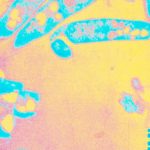Link to Pubmed [PMID] – 31212961
Toxins (Basel) 2019 Jun;11(6)
In the past, it has proved challenging to generate antibodies against mycolactone, the primary lipidic toxin A of causing Buruli ulcer, due to its immunosuppressive properties. Here we show that in vitro display, comprising both phage and yeast display, can be used to select antibodies recognizing mycolactone from a large human naïve phage antibody library. Ten different antibodies were isolated, and hundreds more identified by next generation sequencing. These results indicate the value of in vitro display methods to generate antibodies against difficult antigenic targets such as toxins, which cannot be used for immunization unless inactivated by structural modification. The possibility to easily generate anti-mycolactone antibodies is an exciting prospect for the development of rapid and simple diagnostic/detection methods.

